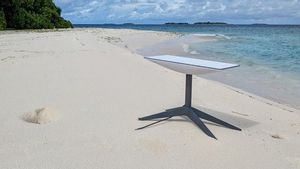JAKARTA The United States Aeronautics and Space Agency (NASA) is aware of the peculiarities of the exoplanets between the Super Earth and the Sub-Neptunus. A number of these exoplanets are said to have disappeared.
So far, scientists have found 5,000 exoplanets in the solar system. However, planets with a diameter of 1.5 to 2 times the diameter of the Earth are reduced from the number that has been found. This raises questions until the study is finally carried out.
From the results of research using retired Kepler Space Telescope data, astronomers stated that a number of exoplanets lost their atmosphere and shrunk. This is thought to have happened because the planet's core was pushing its atmosphere out.
"Illuwanexoplanets now have enough data to say that this gap is not a coincidence. There is something preventing the planet from reaching and/or staying at this size," said ArchiveNASA Science Exoplanet Leader Jessie Christiansen.
Christiansen stated that sub-Neptunian planets that do not have enough mass and gravity are unable to withstand their atmosphere. As a result, their size slowly shrinks to the size of the Super Earth. Both will become equivalent.
اقرأ أيضا:
However, Christiansen and colleagues have not been able to confirm how a number of these exoplanets could lose the atmosphere. Most likely there are two mechanisms that occur, namely the loss of core-powered mass and photoevaporation.
According to research results, the core-powered mass could be lost due to thermal radiation emitted from the hot core pushing the atmosphere away from the planet. Christiansen said that, "The radiation drives the atmosphere from below."
The results of their research are leaning towards the loss of core-powered mass as photoevaporation is unlikely to occur in a short time. It took at least hundreds of millions of years to make the atmosphere less left.
They have observed the star clusters Praesepe and Hyades aged 600 million to 800 years, past the age of photoevaporation. As a result, the two stars in the cluster still have a sub-Neptunian planet and its atmosphere is estimated to be intact.
Astronomers have spent more than five years solving this problem. Until now, the results of their research are far from finished and they are still developing an understanding of photoevaporation and core-powered mass loss.
The English, Chinese, Japanese, Arabic, and French versions are automatically generated by the AI. So there may still be inaccuracies in translating, please always see Indonesian as our main language. (system supported by DigitalSiber.id)















